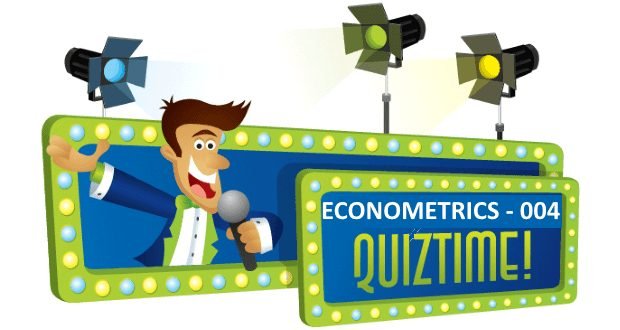500 câu trắc nghiệm Kinh tế lượng – 3B

Tổng hợp 500 câu trắc nghiệm + tự luận Kinh tế lượng (Elementary Statistics). Tất cả các câu hỏi trắc nghiệm + tự luận đều có đáp án. Nội dung được khái quát trong 13 phần, mỗi phần gồm 3 bài kiểm tra (A, B, C). Các câu hỏi trắc nghiệm + tự luận bám rất sát chương trình kinh tế lượng, đặc biệt là phần thống kê, rất phù hợp cho các bạn củng cố và mở rộng các kiến thức về Kinh tế lượng.
Các câu hỏi trắc nghiệm + tự luận của phần 3B bao gồm:
SHORT ANSWER. Write the word or phrase that best completes each statement or answers the question. Provide an appropriate response.
1) Sometimes probabilities derived by the relative frequency method differ from the probabilities expected from classical probability methods. How does the law of large numbers apply in this situation?
The law of large numbers states that as an experiment is repeated again and again, the relative frequency probabilities tend to approach the actual probabilities expected from the classical approach.
2) Interpret the symbol P(B|A) and explain what is meant by the expression. What do we know if P(B|A) is not the same as P(B)?
This is the symbol for conditional probability and means the probability of event B occurring given that A has occurred. A and B are not independent
3) Consider the following formulas:
\(n\Pr = \frac{{n!}}{{(n – r)!}}\)
\(nCr = \frac{{n!}}{{(n – r)!r!}}\)
Given the same values for n and r in each formula, which is the smaller value, P or C? How does this relate to the concept of counting the number of outcomes based on whether or not order is a criterion?
The combination value will be smaller, since order is not important. For example, ABC is equivalent to ACB and would not be counted twice. If, however, r is 0 or 1 then nPr = nCr.
MULTIPLE CHOICE. Choose the one alternative that best completes the statement or answers the question.
Express the indicated degree of likelihood as a probability value.
4) “You have a 50-50 chance of choosing the correct answer.”
○ 0.25
● 0.50
○ 0.9
○ 50
Find the indicated probability.
5) A class consists of 46 women and 87 men. If a student is randomly selected, what is the probability that the student is a woman?
○ 1/133
● 46/133
○ 87/133
○ 46/87
Answer the question, considering an event to be “unusual” if its probability is less than or equal to 0.05.
6) Assume that a study of 300 randomly selected school bus routes showed that 279 arrived on time. Is it “unusual” for a school bus to arrive late?
○ Yes
● No
From the information provided, create the sample space of possible outcomes.
7) Flip a coin three times.
● HHH HHT HTH HTT THH THT TTH TTT
○ HHH HTT HTH TTT HTT THH HHT THT
○ HTT THT HTH HHH TTH TTT
○ HHH TTT THT HTH HHT TTH HTH
Answer the question.
8) In a certain town, 2% of people commute to work by bicycle. If a person is selected randomly
from the town, what are the odds against selecting someone who commutes by bicycle?
○ 1 : 49
○ 49 : 50
● 49 : 1
○ 1 : 50
Find the indicated probability.
9) The table below describes the smoking habits of a group of asthma sufferers.
| Nonsmoker | Occasional smoker | Regular smoker | Heavy smoker | Total | |
| Men | 335 | 30 | 82 | 48 | 495 |
| Women | 420 | 33 | 71 | 33 | 557 |
| Total | 755 | 63 | 153 | 81 | 1052 |
If one of the 1052 people is randomly selected, find the probability that the person is a man or a
heavy smoker.
● 0.502
○ 0.548
○ 0.593
○ 0.456
10) A bag contains 8 red marbles, 4 blue marbles, and 1 green marble. Find P(not blue).
● 9/13
○ 9
○ 13/9
○ 4/13